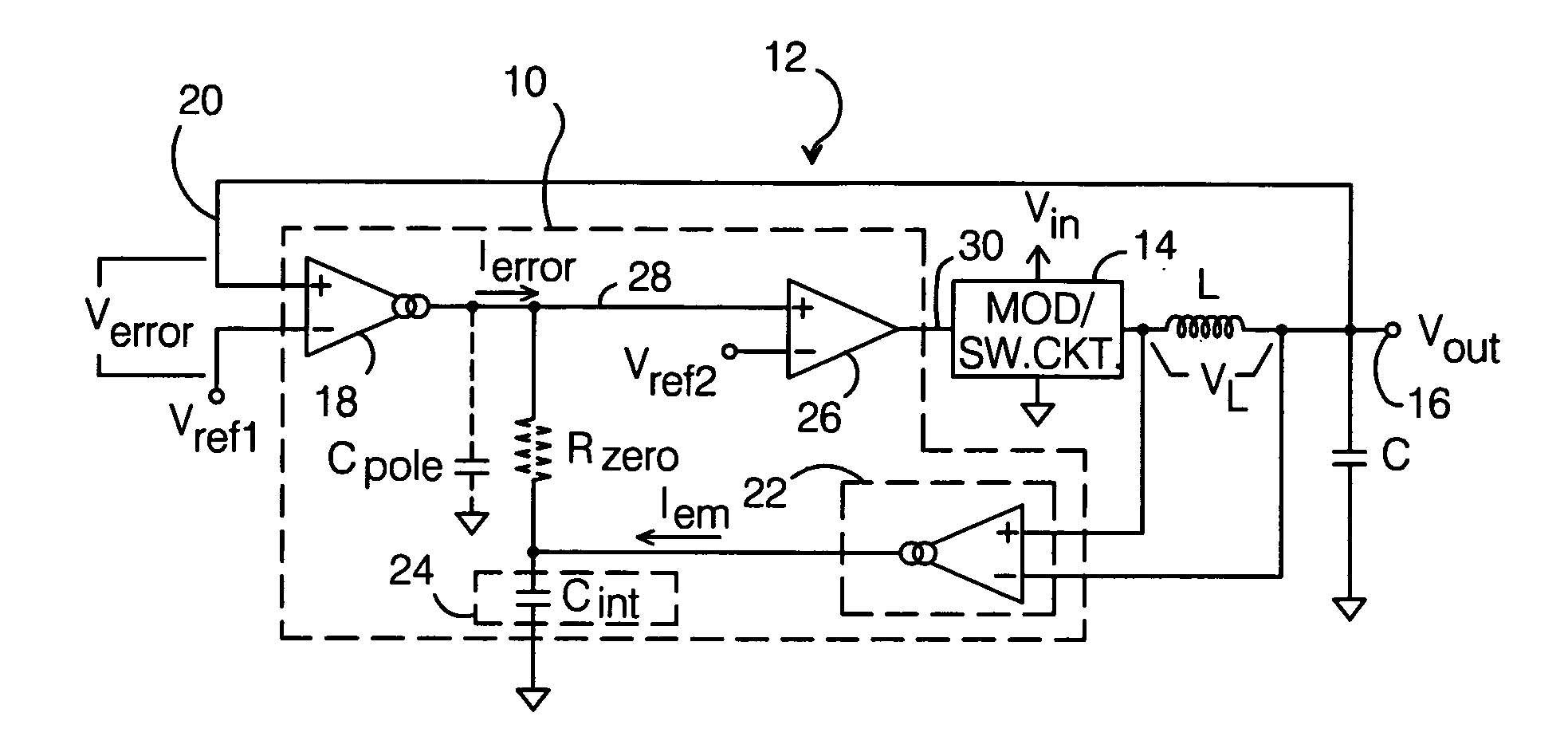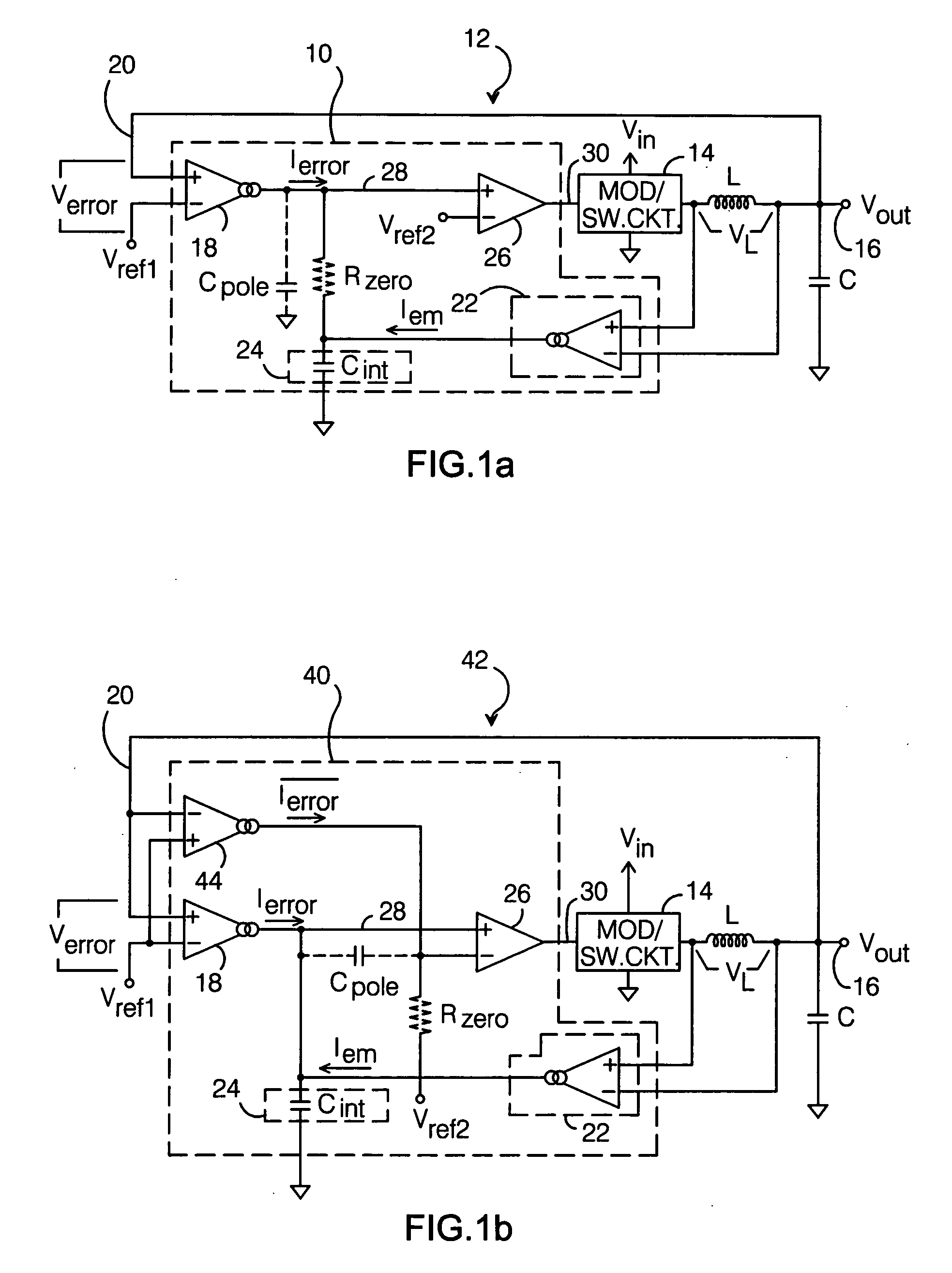Single integrator sensorless current mode control for a switching power converter
- Summary
- Abstract
- Description
- Claims
- Application Information
AI Technical Summary
Benefits of technology
Problems solved by technology
Method used
Image
Examples
Embodiment Construction
[0035]Before describing the present single integrator SCM controller and control method, a background discussion of current mode operation is presented.
[0036]Current mode control typically requires the use of a current sense amplifier which is used to sense the current in the converter's output inductor. It is generally believed that the offset of the current sense amplifier should be minimized. However, this is only true for a few unique circumstances. For example, for normal “continuous conduction mode” (CCM) operation, the offset of the current sense amplifier is largely irrelevant. The unique circumstances where accurate DC information from the current sense amplifier is needed are:
[0037]1) Zero current: used for sensing the CCM / DCM (discontinuous conduction mode) boundary and providing true diode emulation. Zero current is a unique condition. When measuring the zero value of any given variable, errors in the gain on that variable are irrelevant. However, rather than employ true...
PUM
 Login to View More
Login to View More Abstract
Description
Claims
Application Information
 Login to View More
Login to View More - R&D
- Intellectual Property
- Life Sciences
- Materials
- Tech Scout
- Unparalleled Data Quality
- Higher Quality Content
- 60% Fewer Hallucinations
Browse by: Latest US Patents, China's latest patents, Technical Efficacy Thesaurus, Application Domain, Technology Topic, Popular Technical Reports.
© 2025 PatSnap. All rights reserved.Legal|Privacy policy|Modern Slavery Act Transparency Statement|Sitemap|About US| Contact US: help@patsnap.com



